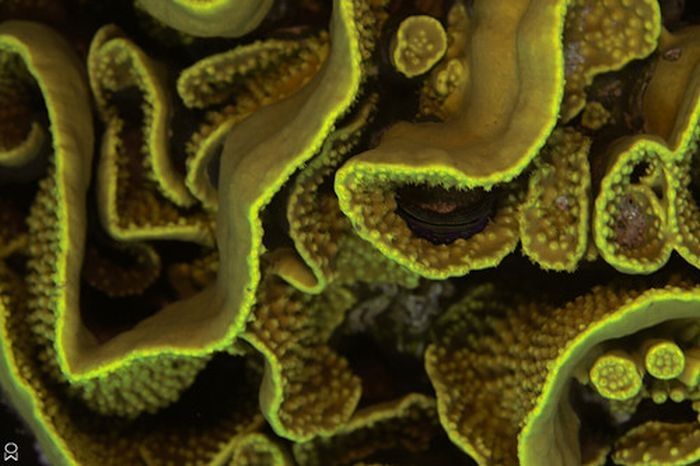|
|
Coral Organisms
|
The stomach closes at the base of the polyp, where the epithelium produces an exoskeleton called the basal plate or calicle (L. small cup). The calicle is formed by a thickened calcareous ring (annular thickening) with six supporting radial ridges. These structures grow vertically and project into the base of the polyp. When a polyp is physically stressed, its tentacles contract into the calyx so that virtually no part is exposed above the skeletal platform. This protects the organism from predators and the elements.
The polyp grows by extension of vertical calices which occasionally septate to form a new, higher, basal plate. Over many generations this extension forms the large calcareous structures of corals and ultimately coral reefs.
Formation of the calcareous exoskeleton involves deposition of the mineral aragonite by the polyps from calcium and carbonate ions they acquire from seawater. The rate of deposition, while varying greatly across species and environmental conditions, can be as much as 10 g / m² of polyp / day (0.3 ounce / sq yd / day). This is light dependent, with night-time production 90% lower than that during the middle of the day.
Nematocysts are stinging cells at the tips of the calices that carry poison which they rapidly release in response to contact with another organism. The tentacles also bear a contractile band of epithelium called the pharynx. Jellyfish and sea anemones also carry nematocysts.
|
|









